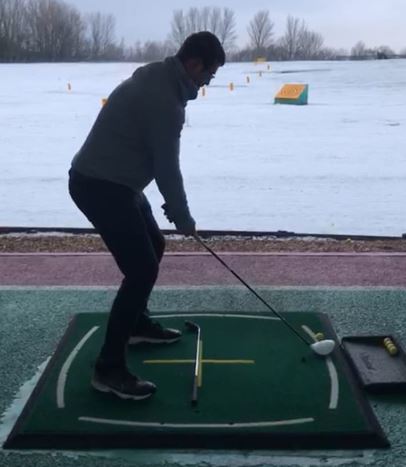How To Hit Irons Consistently – Pro Tips For Improvement
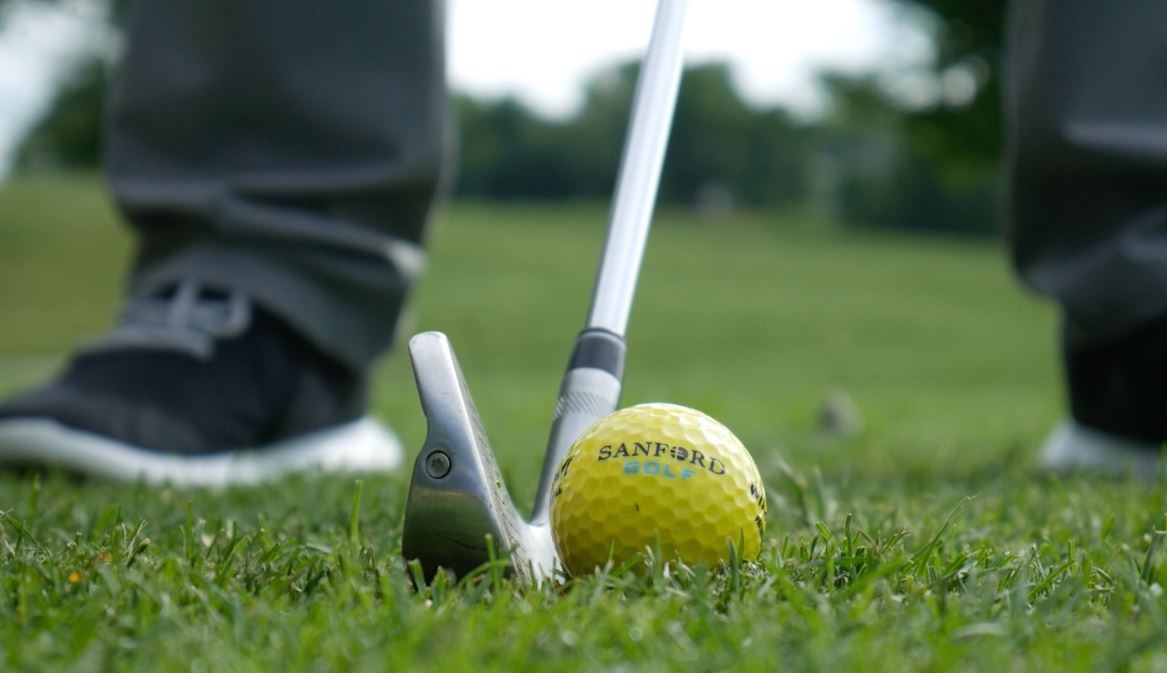
Being able to hit your irons consistently can lower your scores dramatically. There is nothing worse than bombing a drive down the middle and then missing the green, or standing on a par three and dunking it in the water.
At the end of the day practice does make perfect, but there are a few things you should be doing that can help speed up the process. Let’s dive into some details below.
Talk About Hitting Consistently
Hitting your irons consistently could mean different things to different people. For tour professionals and scratch golfers it would mean trying to hit every green, for mid handicap players it could mean making good contact and having a consistent shape, and for high handicap players it could mean not duffing or thinning the ball.
Setting your expectations is extremely important, this will allow you to not get upset when things go badly and from there shoot better scores.
Identify The Ways Irons Can Go Inconsistent
Inconsistent shots with your irons can be interpreted in many different ways.
Duffing and tining the ball will definitely make your irons inconsistent. Timing is another big factor with regards to consistency. Your strike on the face as well as connection with the turf will influence your consistency too.
An inconsistent swing speed will also have a negative impact. And lastly your shot shape, if you intend to hit a draw and you hit a fade this will also cause inconsistencies with regards to the result.
Top Inconsistency Faults And How To Fix Them

Angle Of Attack
Your angle of attack is the degree in which your club hits the ground. A positive angle of attack would be hitting up on the ball and a negative angle of attack would be hitting down into the ground.
With an iron you want to have a negative angle of attack. With a 7 iron ideally you would want to have between 3 to 6 degrees of negative angle of attack.
This is what they call compressing the ball. Being able to hit down on the ball creates distance and consistency in your irons. This downwards angle helps with strike and also prevents you from duffing and thinning the ball.
A big misconception high handicap and beginner golfers have is that they think hitting down on the ball will cause you to duff the ball or ‘hit it fat’, this is very wrong. This misconception then leads them to thinning the ball, because they don’t want to hit the ground.
It is easier said than done when it comes to hitting down on the ball, there are a few swing faults that cause this. The two main are an over the top swing and falling back on the ball.
Over The Top Swing
What does this mean? It is a very common term used in golf, and it refers to the way your club comes through the ball. When your club and hands travel over the top of your swing plane it causes your club path to travel from out to in (in other words from outside the target line to inside the target line) this is not a good move in the golf swing.
This ‘out to in’ movement causes you to have an early release of the club head.
Your hands will flick towards the ball losing all your downward momentum and cause you to hit up on the ball. This is where your inconsistent stroke comes from.
There are a few different reasons why you come over the top, below are my top 3, but be careful this may not to be the reason why you are swinging over the top and working on these might not apply to you.
Poor Grip
A weak grip this is where your left hand sits under the grip (right hander). Your hand position will cause you to swing the club over the top because the clubface will be open at impact. If you had to swing straight through or ‘in to out’ the ball would go far right. Your natural move will be to swing left to counteract it.
Placing your left hand more on top of the grip and over will help you present the clubface in a stronger position at impact, and allow you to swing ‘in to out’.
No shoulder turn
Not turning your shoulders on the back swing will cause you to come over the top. When you don’t turn your shoulders on your back swing you do not have enough space to drop the club on the inside, forcing you to swing over the top.
Falling Back
When you fall back when hitting the ball or hit off the back foot, your swing path will be ‘out to in’ or over the top. It is natural for beginners to fall back on the ball, as they feel like they need to lift the ball up. But it is actually the opposite, you need to drive through onto your left side and hit down on the ball. This movement will help you swing straighter or even ‘in to out’.
Lifting Your Head
Lifting your head when hitting the golf ball will cause major inconsistency when hitting your irons. This will cause you to thin, duff and have poor control.
A big misconception between amateurs, beginners and high handicap golfers is that you need to keep your head down when hitting the ball. That is completely wrong. Look at the below picture.
When rotating correctly your head actually turns slightly at impact. The lifting of your head is actually caused by your pelvis shifting towards the ball, another term for it is early extension.
Instead of trying to keep your head down, rather try to keep your pelvis or butt pushed back on your down swing. This is a much more efficient way to ‘keep your head down’. It will improve your strike, distance and control when hitting the ball.
Other Ways To Improve Your Consistency With The Irons
Using training aids can really help your consistency with your irons. See some of our best ones below.
The Hanger
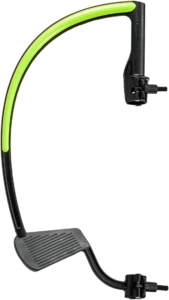
The hanger drill is a great way to improve consistency. The idea of this drill is to help maintain a strong clubface position throughout the swing. Once set up the hanger should be against your left forearm (right hander). When tacking your backswing you need to keep the hanger against your forearm throughout the entire swing.
It will help you maintain a strong clubface, helping you swing from the inside and create more distance.
You can also use a standard plastic coat hanger. Take the hanger on the grip with the hook facing upwards. From there take the club back while maintaining the hanger on your forearm.
Click here for more info.
Eyeline Speed Trap
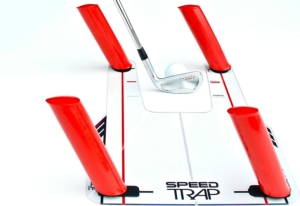
This training aid is great for fixing your ‘out to in’ swing and strike. The board encourages you to hit the ball first, while the red path aids give you a visual aid of the correct path as well as instant feedback when swinging the club. If you hit the outside aids you know you are coming over the top. Take a few practice swing while missing the aids, this will give you a good feeling of how to correctly swing the club.
Sometimes being able to see the correct path helps accelerate the swing change.
Click here for more info
Hinge Tool
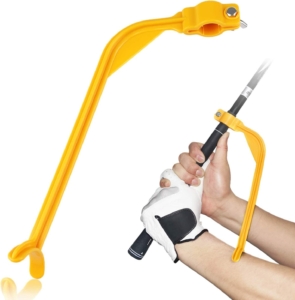
This tool is great for helping you improve your turn and wrist hinge. Place the tool on your grip facing slightly to the right (right hander). From there you need to turn your shoulders and hinge your wrist. If done correctly your forearm should slot into the tool.
If your forearm does not slot in, then doing a few practice swings until you get it right, this will do the trick.
Click here for more info
Conclusion
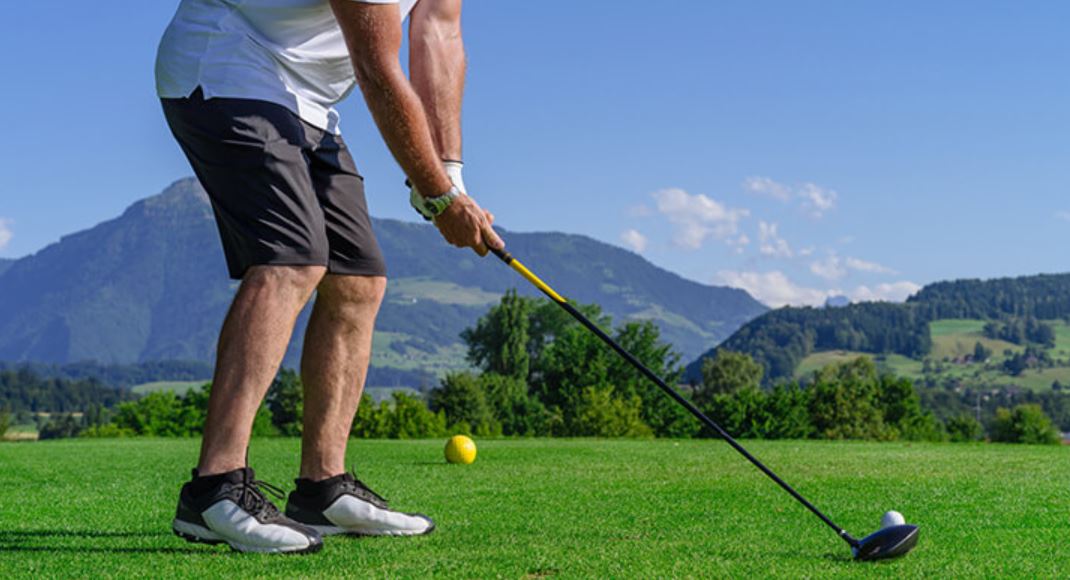
Being able to hit your irons consistently is incredibly important if you want to improve your scores. Being able to hit the green in regulation will help you make more pars and birdies and therefore improve your handicap.
There are a few simple things that players do that make your irons inconsistent. Identifying the cause and working on it is the best way to go about improving your irons.
Practice makes perfect at the end of the day, you won’t become a good iron player overnight. It will take hard work on the range, but be sure to work on the correct things. Follow the tips above or go see your local pro to get some professional advice.

